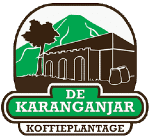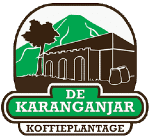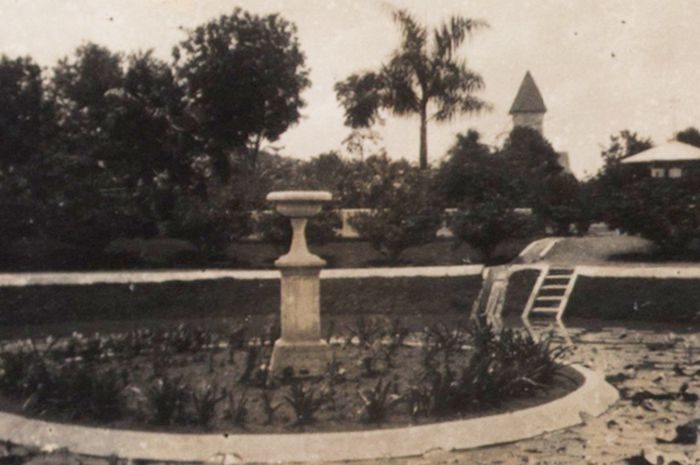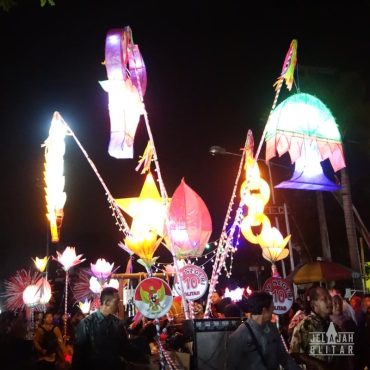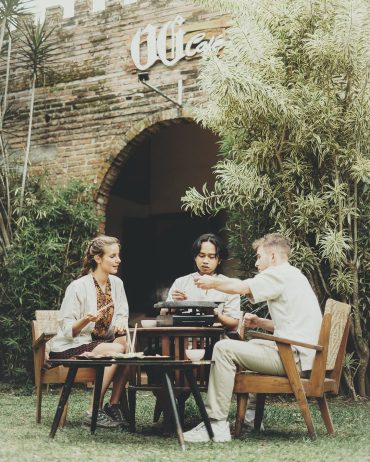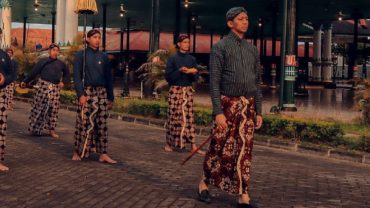Ever imagined a green park that has stood majestically since the Dutch colonial era?
A park that holds a lot of history and is a silent witness to the development of Blitar?
That's Bon Rojo, a green oasis amidst the hustle and bustle of the city that holds its own charm.
Bon Rojo is one of Blitar's iconic green open spaces, offering a long history that dates back to the Dutch East Indies colonial era.
Estimated to have existed since 1890, this park continues to grow and become an integral part of Blitar's identity.
In addition to functioning as the city's lungs, Bon Rojo also witnesses the changes in Blitar, especially the Bendogerit area, which was once known as a bustling centre.
In his book Bon Rojo (2022), Jeffry Dwi Kurniawan mentions that this park was located in the Bendogerit area, a strategic area in its day.
To the north is the official residence of the mayor or burgemeester, which in colonial times served as the office of the plantation's Controleer.
Bon Rojo's strategic location is further emphasised by its presence amongst important buildings that add to the park's historical significance.
To the east, the park is bordered by St Joseph's Church, a parish, and the former Catholic HIS school, now known as SMAK Diponegoro Blitar.
To the south is OSVIA Blitar, an educational institution during the colonial period, and to the west flows the Urung-urung River.
Jeffry also added that Bon Rojo is one of the most beautiful green open spaces, with natural preservation that can only be matched by big cities such as Malang, Bogor and Medan.
This is confirmed in the same book by Kunto, who mentions that Blitar had triumphed in terms of city cleanliness, competing with Madiun, Makassar, and Medan in its time.
Nama “Bon Rojo” sendiri memiliki beberapa versi mengenai asal usulnya, yang semakin memperkaya sejarah dan budaya taman ini.
Versi pertama menyebutkan bahwa “Bon Rojo” berasal dari kata “Kebon Rojo,” yang dalam bahasa Jawa berarti kebun milik raja.
Sementara versi lain menghubungkannya dengan “kebun raya,” mengingat pelafalan huruf “J” dalam bahasa Jawa sering kali berubah menjadi “Y.”
Selain itu, ada juga versi yang menyebutkan bahwa Bon Rojo bermakna “kebun praja,” yang menunjukkan bahwa taman ini difungsikan sebagai kebun kota.
However, Blitar people generally recognise and use the first version, which refers to Kebon Rojo as the king's garden. In addition to these three versions, the park is also known as Kebon Retjo, which refers to the Ganesha statue and Kinewu inscription that were placed in the park area. In the 1960s, the statue was moved to the district pavilion, and is currently kept at the Penataran Museum for better care, while a new Ganesha statue was installed in the park itself as a replacement.
In addition to its rich history of symbolism and culture, Bon Rojo also plays an important role in the context of agriculture during the Dutch East Indies.
This park was originally built by the colonial government as a laboratory for superior plants. In this place, various types of plants, such as protected trees, ornamental plants, flowers, and various varieties of grass, are cultivated as an effort to support plantations in Blitar.
The Bataviaasch Niewblad newspaper published on 19 December 1907 even referred to Bon Rojo as a miniature Bogor Botanical Garden because of its similar function as a plant research and development centre.
The laboratory plays a key role in the development of agriculture and plantations in the Blitar region, making it not just a city park, but also a centre of innovation in agriculture.
Bon Rojo is not only a silent witness to Blitar's historical development, but also reflects how the colonial legacy lives on through the agricultural and plantation landscape.
Salah satu contoh nyata lainnya adalah Perkebunan Karanganjar, yang berdiri sejak masa kolonial dan hingga kini dikenal sebagai produsen coffee berkualitas tinggi.
Perkebunan ini telah berkembang dari sekadar penghasil coffee biasa menjadi salah satu produsen coffee unggulan di Indonesia, dengan inovasi seperti coffee beraroma buah yang semakin meningkatkan daya tariknya di pasar nasional maupun internasional.
Just as Bon Rojo once served as a laboratory for superior crops, Karanganjar Plantation also reflects the agricultural expertise passed down since colonial times.
Kini, perkebunan tersebut terus berinovasi dan berperan penting dalam industri coffee Indonesia. Keduanya, baik Bon Rojo maupun Perkebunan Karanganjar, menunjukkan bagaimana kota Blitar tetap mempertahankan tradisi agrikultur yang kaya, sambil terus beradaptasi dan berkembang di era modern.
This connection between history and innovation not only enriches local culture, but also elevates Blitar's name in the national and international arena.
Bon Rojo is not only a silent witness to Blitar's historical development, but also reflects how the colonial legacy lives on through the agricultural and plantation landscape.
Salah satu contoh nyata lainnya adalah Perkebunan Karanganjar, yang berdiri sejak masa kolonial dan hingga kini dikenal sebagai produsen coffee berkualitas tinggi.
Perkebunan ini telah berkembang dari sekadar penghasil coffee biasa menjadi salah satu produsen coffee unggulan di Indonesia, dengan inovasi seperti coffee beraroma buah yang semakin meningkatkan daya tariknya di pasar nasional maupun internasional.
Just as Bon Rojo once served as a laboratory for superior crops, Karanganjar Plantation also reflects the agricultural expertise passed down since colonial times.
Kini, perkebunan tersebut terus berinovasi dan berperan penting dalam industri coffee Indonesia. Keduanya, baik Bon Rojo maupun Perkebunan Karanganjar, menunjukkan bagaimana kota Blitar tetap mempertahankan tradisi agrikultur yang kaya, sambil terus beradaptasi dan berkembang di era modern.
This connection between history and innovation not only enriches local culture, but also elevates Blitar's name in the national and international arena.
